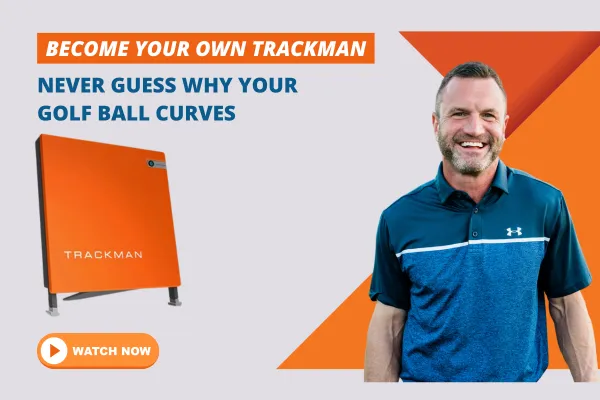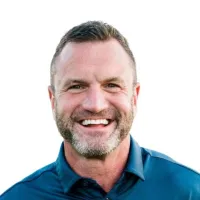EJS GOLF BLOG
Learn about the golf swing and what you can do to improve your score on the golf course. Fill out the form below if you have any questions or want to set up a time to talk.
Mastering the Art of Golf with Coach Erik Schjolberg
I’m Coach Erik Schjolberg, and welcome to the EJS Golf blog—Scottsdale’s authority on science-driven ball-striking. Here you’ll find in-depth analyses of swing mechanics, data-backed breakdowns of impact and launch dynamics, and actionable practice routines designed to rewire your muscle memory from day one. Each post peels back the curtain on cause-and-effect in your swing, whether you’re chasing Tour-level precision, collegiate consistency, or lower weekend scores. Dive into our deep-dive articles, master the drills that drive real improvement, and transform your game with proven science and strategy.
But let’s be clear: golf isn’t only about perfecting swing mechanics. The mental battle you fight on each tee is often the one that determines whether you stay in the game or walk off the course. Here, we’ll tackle the psychological hurdles—the pressure of a tight leaderboard, the frustration when a swing fails under stress, the self-doubt that creeps in after a bad hole. You’ll learn evidence-based mental strategies—visualization routines, pre-shot rituals, stress-management techniques—that fortify your focus and resilience. Mastering these mind-set tools is just as critical as dialing in your impact position, and I’ll show you exactly how to integrate mental training into your practice for lasting confidence on every shot.
Explore Our Blogs

Master Golf Ball Flight: Become Your Own Trackman
Become Your Own Personal Trackman
Tired of guessing why your golf ball flies like it does? It’s time to ditch the guesswork and unlock the science behind your swing. In this blog, you’ll learn how to diagnose your golf shots like a pro, using the same principles that power advanced launch monitors like Trackman—no expensive equipment required. By understanding golf ball flight physics, you’ll become your own Trackman, capable of analyzing every shot and making targeted improvements to your game.
Hi friends and golfers. My name is coach Erik Schjolberg, founder and owner of EJS Golf, the Science of Better Golf. You can find me teaching live at McCormick Ranch golf course located in Scottsdale, AZ. Having coached thousands of lessons over the past 25 years plus, I have learned that the more golfers focus on data and what is real vs. feels or imagined, the better they get. This is a super important topic that you are going to read and learn about today.
The Science Behind Your Swing: Understanding the D-Plane
Every golf shot hinges on a critical concept called the D-Plane. This is the "moment of truth" at impact, where physics determines your ball’s fate. Mastering the D-Plane is your first step to better golf.
What is the D-Plane?
The D-Plane is a three-dimensional plane formed by two key factors at impact:
Club Path: The direction your club head moves (horizontal and vertical).
Face Angle: The direction your club face points (horizontal and vertical).
Picture two alignment sticks: one for the club path, the other for the face angle. The plane connecting them—the D-Plane—controls:
The ball’s initial launch direction.
Its spin axis tilt (which causes curvature).
The backspin rate.
Understanding this plane lets you decode what happens when club meets ball.
How Club Path and Face Angle Affect Your Shot
Club Path: A leftward path (out-to-in) or rightward path (in-to-out) shapes your swing’s direction.
Face Angle: A closed face (left) or open face (right) sets the ball’s starting line.
The interplay between these factors—known as face-to-path—is what makes your shot fly straight, fade, or draw.
Decoding Ball Flight: Start Direction and Curvature
Every shot tells a story through two clues: where it starts and how it curves. Here’s how to read them.
Why the Club Face Determines Start Direction
Old myths said swing path ruled start direction. Science proves otherwise: face angle is king.
For irons, it drives about 75% of the starting line.
For drivers, it’s 85%.
If your ball starts left, your face was closed. If it starts right, it was open. It’s that simple.
Key Takeaway: Start direction reveals your face angle at impact.
How Spin Axis Causes the Ball to Curve
Curvature comes from the spin axis—the tilt of the ball’s rotation. There’s no "sidespin," just a single axis that tilts:
Negative spin axis: Curves left (draw/hook for right-handers).
Positive spin axis: Curves right (fade/slice).
Zero spin axis: Flies straight.
The tilt depends on face-to-path:
Face closed to path = left curve.
Face open to path = right curve.
The bigger the difference, the sharper the curve.
Key Takeaway: Curvature shows the relationship between face angle and club path.
Diagnosing Your Shots: A Step-by-Step Guide
With start direction and curvature, you can diagnose any shot like a pro. Follow these steps:
Check the start direction: This shows your face angle.
Watch the curve: This reveals your face-to-path.
Deduce the club path: Combine the two to pinpoint your swing path.
Here’s how it applies to common shots:
Common Shot Patterns and What They Mean
Straight Pull (Starts Left, Stays Left)
Face Angle: Closed (left).
Curvature: None (face-to-path near zero).
Club Path: Out-to-in, matching the face.
Diagnosis: A squared-up outside swing.
Straight Push (Starts Right, Stays Right)
Face Angle: Open (right).
Curvature: None (face-to-path near zero).
Club Path: In-to-out, matching the face.
Diagnosis: A squared-up inside swing.
Pull Fade / Cut (Starts Left, Curves Right)
Face Angle: Closed.
Curvature: Right (positive face-to-path).
Club Path: Further left than the face.
Diagnosis: Outside-in with an open face relative to path.
Push Draw / Draw (Starts Right, Curves Left)
Face Angle: Open.
Curvature: Left (negative face-to-path).
Club Path: Further right than the face.
Diagnosis: Inside-out with a closed face relative to path.
Slice (Starts Right or Center, Curves Hard Right)
Face Angle: Open or neutral.
Curvature: Sharp right (large positive face-to-path).
Club Path: Often far left.
Diagnosis: Open face meets outside-in path.
Hook (Starts Left or Center, Curves Hard Left)
Face Angle: Closed or neutral.
Curvature: Sharp left (large negative face-to-path).
Club Path: Often far right.
Diagnosis: Closed face meets inside-out path.
Taking Action: From Diagnosis to Improvement
Diagnosis is only half the battle—now fix it.
Simple Adjustments for Beginners
Ball Position: Back for out-to-in; forward for in-to-out.
Setup: Closed shoulders for out-to-in; open for in-to-out.
Swing Thought: Swing to “right field” (out-to-in) or “left field” (in-to-out).
Advanced Techniques for Seasoned Golfers
Face Control: Drill opening or closing the face.
Path Adjustment: Shallowing or pivoting to tweak path.
Focus on impact first, then trace the swing flaw back to its source.
Conclusion
You don’t need a launch monitor to master your swing—just the ball flight laws. Start direction shows your face angle; curvature reveals your face-to-path. With practice, you’ll diagnose shots like a pro and improve with precision.
Ready to level up? Watch your next shot, ask “Where did it start? How did it curve?”, and start fixing your game today!
Read more of my blogs and go to my YouTube channel for a further understanding
(480) 861-9370
What You Can Expect from Our Blog
1. Expert Insights on Swing Mechanics:
With over 25 years of experience as a PGA Professional Golf Instructor, I delve deep into the nuances of golf swing mechanics. My articles break down complex theories into understandable concepts, focusing on ground reaction forces (GRFs), biomechanics, and efficient energy transfer.
2. Advanced Technological Guidance:
Our academy is equipped with state-of-the-art tools like the Trackman 4 Launch Monitor, 3D Pressure Plates, and Hackmotion, among others. On the blog, I share how to leverage these technologies to gain precise feedback on your swing, helping you make informed adjustments and see measurable improvements.
3. Tailored Practice Routines:
My philosophy is built on the belief that improvement should be evident from the first lesson. I advocate a '15 minutes per day' practice model, designed to fit into your busy schedule while ensuring consistent progress. Each blog post aims to offer practice drills and routines that are easy to implement and effective in refining your skills.
4. Real Success Stories:
Read about the experiences of those who have trained at EJS Golf Academy. These testimonials not only inspire but also illustrate the practical application of our teaching methodologies and the real results achieved.
5. Interactive Learning:
We occasionally feature video tutorials and interactive content that allows you to visually grasp techniques and corrections. This blended approach helps reinforce learning and allows you to engage with the content actively.
How Our Blog Helps Golfers Get Better
Every post is crafted with the intent to educate. We cover everything from basic fundamentals to advanced techniques, ensuring there's something valuable for every skill level. By presenting data and evidence-backed strategies, our blog demystifies the 'why' and 'how' behind effective golf training. This analytical approach empowers you to make smarter decisions about your practice and play. We understand that generic advice does not suit everyone. Our blog posts are designed to help you identify your own needs and adapt our techniques accordingly. Whether it’s adjusting your grip, stance, or swing path, you’ll find personalized tips that resonate with your specific challenges. Beyond just reading, our blog serves as a community hub where you can interact with fellow golfers and share your experiences. This supportive environment encourages learning and improvement through collective wisdom.
Join Us on Your Path to Mastery
Whether you’re looking to refine your swing, understand the biomechanics of your body, or simply get more enjoyment out of the game, our blog at EJS Golf Academy is your go-to resource. Bookmark our page, subscribe to updates, and start transforming your game today.
Remember, at EJS Golf, we don’t just teach golf; we craft master golfers. Let’s begin this journey together. Visit us atEJSGolf.com to learn more about our programs and start your training online or at our Scottsdale location. Let’s make every swing count!
DO YOU HAVE QUESTIONS?
Fill out my contact form and I will respond to you within 24 hours.
phone: 480.861.9370 email: [email protected]

I've taken multiple private lessons with Erik and he's been by far the best swing coach I have ever worked with. He has the ability to dissect your swing and make small changes for big improvements. What I love most about his lessons is they go far beyond the 1 or 2 hours you're with him. He follows up with videos of how you can improve at home and on the range. The value he provides is absolutely worth the cost of his sessions. I would recommend any golfer at any level who truly wants to get better to go see Erik.”
- Reanol H.

Erik is the best! and that is not an exaggeration. There has not been a single lesson where I haven't walked out and felt like a far better golfer than before. What can't be praised enough is the effort and dedication that Eric puts into each of his students, as his approach to fixing and improving my golf swing was specific to me. While teaching, Erik takes the extra time to truly dive into what he is trying to convey rather than just telling you, allowing for a better understanding. Beyond the instruction at the course, Erik sends specific drills to you from an app that allows for slow motion replays, letting you break down everything and work on your game at any time. I genuinely mean it when I say that I would recommend Erik to anyone wanting to improve their golf game, as he is not only a top not instructor but also a top notch person who cares about his students.
- Brennan K.

Erik is flat out a great coach and mentor! I highly recommend him! Working from the ground up, my swing is healthier and smooth! I wanted a coach that shared the same main principles as the late Tony Manzoni and Erik hits the mark! Found Erik by listening to the Golf Smarter podcast by Fred Greene and connected with EJS Golf through the Perfect Motion app. Erik is motivated and incredibly gifted at his craft!
- Bryan B., Indiana, USA


